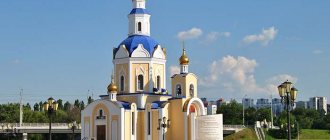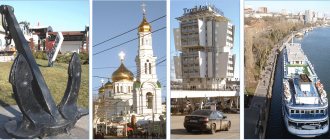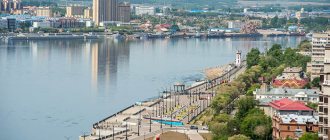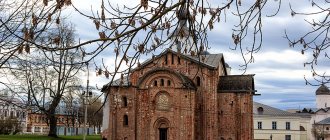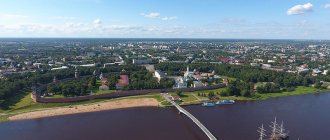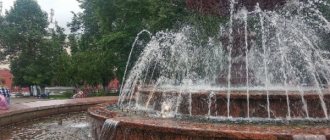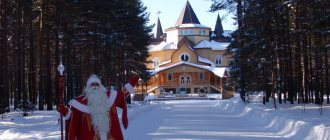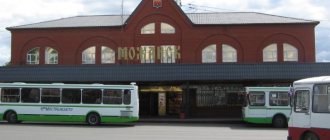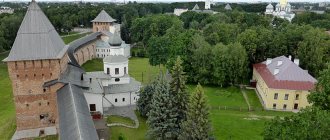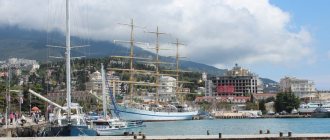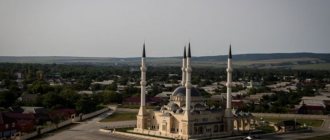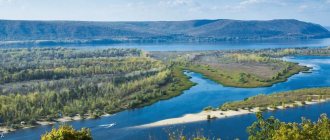December 23, 2022 | Comments: | Views: 9,509
Home » Home » Where to go with a child in Rostov
Rate this article:
( 1 votes, average score: 5.00 out of 5)
One of the oldest cities in Russia offers a varied cultural and entertainment program for children. There are many places where the whole family can go with a child in Rostov. Architectural monuments, religious sites and museums tell about the centuries-old history. Organizing leisure time is a responsible matter. Therefore, the route should be planned in advance. In this case, it is necessary to take into account the interests and preferences of young tourists.
What to see in Rostov Veliky
Today in modern Rostov there are 323 architectural monuments, 100 of which are of federal significance. The main attraction of this city is the Kremlin, which, in fact, was never a fortress protecting the city, but was the bishop’s courtyard. However, by analogy with fortresses in other ancient Russian cities, it began to be called the Kremlin. On its territory there is a state museum-reserve, which unites several museums telling about the history of the Rostov region, as well as collections of icons and objects of decorative and applied art. Usually, much more than museums, tourists like to simply walk around the territory of the Kremlin and walk along its walls, moving along them from temple to temple (this can only be done in the warm season).
There are also several small museums in Rostov. First of all, we recommend visiting the Museum of Rostov Merchants and the Museum of Enamel.
Orthodox believers come to Rostov to visit Spaso-Yakovlevsky Dimitrievsky, Avramievsky Epiphany, Mother of God Nativity, Petrovsky monasteries and the metochion of the Trinity-Sergius Lavra - Varnitsky Monastery, as well as the Boris and Glebsky Monastery located 18 kilometers from the city.
With little tourists, it is worth visiting the Onion Compound and the Shchuchy Dvor located next to it, where interactive programs with a puppet show are organized: children will learn about the Rostov region, get acquainted with local folklore and hear about the famous Rostov onion.
The city itself, unfortunately, is quite neglected, which does not make the most favorable impression, so you don’t want to walk along its streets for a particularly long time. It is for this reason that you should not travel to Rostov in late autumn and spring: when the weather is wet, the city is very dirty.
One day program
When going on an independent one-day trip, a tourist must develop a program of visiting interesting sites and attractions.
An example would be the following:
- Rostov Kremlin. Most tourist routes start from here. You can spend the whole day here. If you have time restrictions, you should definitely visit the Assumption Cathedral and its belfry. Entrance to the complex is with a single ticket.
- Spaso-Yakovlevsky Monastery. The relics of 2 saints are kept here - Jacob and Demetrius of Rostov. On the territory of the monastery there is a spring with healing water. Guests get incredible pleasure admiring the painted walls of buildings.
- Museum of Enamel. The hallmark of the city is Rostov enamel, so it’s worth visiting this museum. There is unlikely to be enough time to attend a master class, but everyone will be able to purchase a souvenir that reminds them of such an exciting journey.
This is a sample travel itinerary. Any tourist can develop his own. It is recommended to find out in advance the opening hours of the museums you plan to visit.
Sights of Rostov
"Rostov Kremlin"
Strictly speaking, the Kremlin in Rostov is not a Kremlin at all, that is, not a city fortification, but the residence of the bishops of the Rostov-Yaroslavl diocese, which in ancient times was called the bishop's or metropolitan court. But then, because of the high walls that appeared in the second half of the 17th century, the hierarch’s courtyard began to be called a fortress, that is, the Kremlin. However, solid walls in those days served not so much for protection, but to clearly show everyone the greatness of the Rostov diocese.
The most beautiful view of the Kremlin opens from Lake Nero. If you want to take beautiful photos, go around the Kremlin from the side of the lake.
Architectural ensemble of the Rostov Kremlin
The “Kremlin” consists of three parts: in the center of the ensemble there is a metropolitan courtyard, on the territory of which there is a pond, several churches and administrative buildings have been built; to the north of it is Cathedral Square, on which the Assumption Cathedral and belfry are located; to the south is the Metropolitan Garden, adjacent to the shores of Lake Nero. The entire territory is surrounded by strong walls with 11 towers.
The most famous building of the Kremlin and at the same time the oldest building in the city is the majestic five-domed Assumption Cathedral, built in 1508-1512. The remaining buildings appeared on the territory of the bishop's court later - most of them date back to the second half of the 17th century.
Basically, the architectural ensemble of the Kremlin appeared during the reign of Metropolitan Jonah: the hierarch was developing his estate and wanted it to be like the heavenly city of Jerusalem. During the time of Jonah, the two-story building of the Judgment Order appeared (50-60s of the 17th century), and the gate Church of the Resurrection, which connected the Cathedral Square with the bishop's courtyard with the Holy Gate located under it, and the home church of Metropolitan Jonah, and the Church of the Savior without Hands - built around 1670s, and the metropolitan mansions, where the residence of the church hierarch was located and his treasury was kept, as well as the state mansions (“Red Chamber”) - also built in the second half of the 17th century, and the gate church of St. John the Evangelist of 1683.
The last building at the metropolitan courtyard was the Church of Hodegetria from 1692–1693 - it already stands out among earlier churches, because it has already been given the features of the newfangled “Moscow Baroque”.
The entire ensemble of the Kremlin has one unusual feature: most of the buildings are connected by passages laid on the walls. By the way, you’ve probably already seen them, even if you’ve never been to Rostov - it was along these passages that the heroes of Leonid Gaidai’s film “Ivan Vasilyevich Changes His Profession” ran in the 1970s.
Museums of the Rostov Kremlin
Several exhibitions are open on the territory of the Rostov Kremlin: artistic, local history, and historical. You can start your tour from the State Chambers (also called the “Red Chamber”), where on the ground floor there is an exhibition hall “Museum Living Room”, in which guests are introduced to the collections of the museum-reserve and told about the Rostov land. The exhibition is interactive: you can choose the virtual tour you need or watch a slide film.
It doesn’t matter whether you are interested in history and architecture or came to this city just to have a good weekend, the Rostov Kremlin is worth a visit: you don’t have to go to museums or choose only one or two exhibitions that interest you, you can just walk around the territory of the former bishop’s courtyard and make beautiful photographs, climb the belfry, walk along the walls in the summer and admire the surroundings.
The exhibition “The Ancient Past of the Rostov Land” tells about the time from the Paleolithic era to the early Iron Age. Museum guests can see the skulls and bones of mammoths, woolly rhinoceros, reindeer and other animals that lived in these places, as well as household items of the first people: ceramics, battle axes.
The continuation of the local history theme awaits you on the second floor of the State Hall (Red Chamber), where the exhibition “Rostov Land and Rostov in the 7th - 15th Centuries” is on display. In four halls, approximately one and a half thousand objects are presented, telling about different periods of the history of Rostov. Among the unique exhibits are the seal of the Kyiv prince Yaroslav the Wise and an authentic Western European sword of the 10th century.
In the Samuel building you can see the exhibition “Old Russian Art” - this is a rich collection of icons from the 13th - early 20th centuries, facial embroidery from the 16th - 17th centuries, casting from the 12th - 16th centuries, wood and bone carvings from the 15th - 16th centuries.
The White Chamber hosts the exhibition “Museum of Church Antiquities” - this is an experience in the reconstruction of this museum, which existed in Rostov from 1883 to the early 1920s. Visitors can see handwritten and early printed books. weapons, objects of decorative and applied art.
The Gallery hosts the exhibition “Russian and Western European Baroque” - this is a representative collection of icon painting, sculpture and decorative and applied art of the 17th-18th centuries. In addition to icons, you can see sewing, fabrics, and silver items.
In the pantry of the pillarless chamber there is an interesting collection of bells. You will not only learn about the different types of such bells, but also learn about the technology for making them.
Museum of Rostov Merchants
The Rostov Merchants Museum is a branch of the Rostov Kremlin State Museum-Reserve. It is located in the former house of the Kekin merchant family, built at the end of the 18th - beginning of the 19th century in the classicist style.
The museum exhibits about the history of the Kekin merchant family and about the most outstanding representative of this family - Alexei Leontievich Kekin, as well as about the world of the entire Russian merchant class.
By visiting this museum, you will be transported back in time and visit a typical merchant's living room, see a boudoir, a dining room and a study. The exhibition also includes genuine items that belonged to the Kekins.
The museum is very interesting, it gives a thorough understanding of the merchant class, but it is better to visit it with a guide, otherwise you will miss many interesting details. By the way, this museum is very convenient to visit if you are walking from the Rostov Kremlin to the Spaso-Yakovlevsky Dmitriev Monastery - it is located in the middle of the road.
Opening hours: The museum is open from 10 a.m. to 5 p.m.; open on holidays except January 1st. Days off: Monday, Tuesday.
Museum of Enamel in the Rostov Kremlin
In the Kremlin of Rostov the Great, in the premises of the Judgment Order, there is the Museum of Enamel. This artistic craft appeared in the middle of the 18th century.
The museum's collection is one of the richest in Russia, containing more than 3,000 painted enamels: icons, as well as landscapes and portraits decorating various things.
By visiting this museum, you will learn how the craft appeared and developed, how traditions and stories changed, techniques and technologies were honed. It will take you about 40 minutes to visit it. Women especially enjoy a tour of the museum, while children are usually not interested in filigree arts and crafts.
There is a store at the museum where you can purchase products made using the enamel technique by modern Rostov craftsmen.
Spaso-Yakovlevsky Dimitriev Monastery
Spaso-Yakovlevsky Dimitriev Monastery is located in the Yaroslavl region in the city of Rostov in a picturesque location on the shore of Lake Nero.
The monastery was founded at the end of the 14th century by Bishop Jacob, who was expelled from the episcopal see. The clergyman was forced to settle on the western outskirts of the city, where he personally erected a small wooden church in honor of the Conception of the Blessed Virgin Mary. Soon like-minded people began to settle around Jacob, and so a monastery arose, which was originally called Zachatievskaya.
Initially, all buildings in the monastery were wooden. The first stone building was the Trinity Cathedral, built on the site of the first church.
At the very beginning of the 18th century, the monastery was in favor with the local Metropolitan Dmitry of Rostov. The church hierarch chose this monastery as the place of his burial. About half a century after his death, during the renovation of the temple, his incorrupt relics were found, after which his canonization took place, and the monastery began to be popularly called Dmitriev (Dimitriev) - this name was finally officially approved only in the middle of the 19th century.
By the end of the 18th century, the monastery was a rich, thriving monastery, receiving many pilgrims every day. He also became famous for his enamel icons.
In the 19th century, the monastery continued to grow, a new temple was built - St. James of Rostov, and the monastery was honored with visits from Russian emperors.
After the revolution, at first only one remained operational - the Yakovlev Church, and in 1923 the monastery was finally closed, the buildings were given over to housing and workshops. Church valuables were transferred to the local museum, but much was looted.
In 1991, the monastery was returned to the Orthodox Church, and restoration began and monastic life was resumed.
The monastery has its own excursion service: daily from 10:00 to 17:00, guides take tourists and pilgrims (from 1 to 50 people) around the monastery; you can also purchase a tour of the sights of Rostov and other monasteries located near the city. It is advisable to submit applications for excursions no later than one day before the planned date of visiting the monastery. You can arrange excursions by calling 8(48536)7-43-69 or (ask the excursion service). The tour desk is located in the monastery gatehouse building - it is located at the entrance to the monastery, right behind the gate.
Temples of the Spaso-Yakovlevsky Dimitriev Monastery
Now on the territory of the Spaso-Yakovlevskaya Demetrius Monastery you can see three temples.
The five-domed Cathedral of the Conception of St. Anne is today the oldest surviving temple of the monastery. It was erected in 1686 in the patterned style on the site of the first wooden church and was originally consecrated as Trinity. As in other Rostov churches, the iconostasis in it is located on a stone wall. Inside you can see frescoes painted immediately after construction. This cathedral houses one of the main shrines of the monastery - the relics of St. Dmitry of Rostov. In the northern part of this temple, in a hidden tomb, there are the relics of St. James, Bishop of Rostov.
Dimitrievsky Cathedral topped with one large dome was built in 1794-1802 in the classicism style with the money of Count N.P. Sheremetyev. The nobleman planned to transfer the relics of Dmitry of Rostov to this temple, but the local clergy decided to follow the will of the saint, and therefore the relics remained in the Conception Cathedral. The temple is decorated with stucco: the most famous of the images - “The Finding of the Relics of St. Demetrius of Rostov” - can be seen from the north side.
Yakovlevskaya Church (Temple of Jacob of Rostov) was built in 1836 on the site of the chapel of the Conception Cathedral. Its appearance echoes the neighboring St. Demetrius Cathedral.
In the second half of the 18th century, a three-tier bell tower appeared in the monastery.
Epiphany Abraham Monastery in Rostov
The Epiphany Abraham Monastery is located in Rostov the Great. This is one of the oldest monasteries in the Yaroslavl region. The Abrahamic Monastery was known in Rus'; in different years such saints as the Rostov wonderworker Bishop Ignatius and Pimen the Recluse labored there, so many people, both ordinary people and nobles, sought to make a pilgrimage to this monastery. It is known that Saint Righteous John of Kronstadt, Saint Tikhon, and Grand Duchess Elizabeth Feodorovna visited the monastery.
The exact time of its foundation is unknown (researchers usually talk about the end of the 10th century), but it is already mentioned in the chronicles of the second half of the 13th century.
According to legend, the monastery was built on the site of a pagan temple: the hermit Abraham destroyed the idol of the god Veles and founded a monastery on the site where the idol stood.
The monastery grew and flourished for several centuries, but in the 17th century, when Demetrius of Rostov was canonized, the interest of pilgrims switched to the Spaso-Yakovlevsky Monastery located on the opposite side of the Kremlin (where this saint was buried).
At the turn of the 19th-20th centuries, they decided to reform the monastery: the monks were transferred to the Spaso-Yakovlevsky Monastery, and their place was taken by sisters from the Polotsk Monastery.
However, soon after the revolution in 1918, the property of the monastery was nationalized; a few years later, church valuables were confiscated and transferred to the museum. In 1929, the authorities finally banned holding services in the monastery churches and ordered the destruction of the fence. Then a grain warehouse, a kindergarten, a sobering station, a military unit and other secular institutions were opened in the ancient churches.
In 1991, the revival of the monastery began, and churches began to be restored. In 1994, the gate temple of St. Nicholas the Wonderworker was consecrated. Now the reconstruction process continues: it is going very slowly, since the monastery needs money.
Temples of the Epiphany Avraamiev Monastery
There are three churches in the monastery. The austere and majestic five-domed Epiphany Cathedral was built in 1553 on the site of a wooden church founded by Abraham himself. One of the boundaries is dedicated to him, over which a tent characteristic of 16th-century architecture was erected. Another boundary of this temple, dedicated to John the Baptist, is marked with kokoshniks. And above the third limit - St. John the Evangelist - a belfry was built already in the 19th century.
The Church of the Entry of the Mother of God into the Temple is a typical ancient Russian refectory church. It was built in the 17th century by order of Archimandrite Jonah Sysoevich (thanks to whom most of the churches of the Rostov Kremlin were built).
The third temple of the Epiphany Abrahamic Monastery is the gate church of St. Nicholas the Wonderworker . Now services are held in this church.
Monastery of the Nativity of the Virgin Mary in Rostov the Great
The convent of the Nativity of the Virgin Mary is located in the center of Rostov the Great near the Kremlin. The monastery was founded at the end of the 14th century by Saint Theodore of Rostov, nephew of St. Sergius of Radonezh.
Until the 17th century, the monastery had only wooden buildings. The first stone Cathedral of the Nativity of the Blessed Virgin Mary - a single-domed church on a high basement - was built in 1652–1690. You can still see this temple today. Unfortunately, its restoration is not yet completed. Wall paintings from 1715 have been preserved inside. Initially the bell tower was a tented one, but in 1817 a new belfry was built in the classicist style.
There is another temple in the monastery - the Church of the Tikhvin Icon of the Mother of God. So far it is in a deplorable state: the domes have been removed, the frescoes have been painted over, the altar has been blocked off. The restoration of this temple is currently underway.
After the revolution, the monastery was closed. In 1997, the monastery was returned to the church and restoration work began, which is still ongoing.
Now services are held in the Church of St. Nicholas on Podozerka, located near the wall of the monastery.
"Lukova Sloboda" in Rostov
“Lukova Sloboda” is a tiny museum dedicated to the famous Rostov onion.
An interactive program is provided for guests. You will learn that in former times Rostov was known throughout Russia not only for its painted enamels - enamel, but also for its excellent onions, which were transported throughout the country. The guide will tell you about the varieties of this vegetable, the secrets of its cultivation, folk traditions and customs in which it was impossible to do without it.
Lukovaya Sloboda regularly hosts master classes on various topics. Children will be especially interested in them.
In the restaurant, located on the ground floor under the museum, you can try a variety of onion dishes and buy a local souvenir - jam, which Rostov housewives make, of course, all from the same onions.
It’s convenient to combine a visit to Lukova Sloboda with a visit to the Pike Yard, a small museum-restaurant where you can buy fish and try local beer, and children will be entertained by the puppet show “At the Command of the Pike.”
Reviews from tourists
The famous attractions, proximity to Moscow, Yaroslavl and the cities of the Golden Ring of Russia make Rostov the Great a popular tourist destination, including in winter. However, it makes a different impression on tourists: some guests cannot come to terms with the difference in the neatness of the Kremlin and the neglect of the houses outside it, while others accept Rostov with all its pros and cons.
Materials from site users will introduce the winter city to:
- photo album “Winter Tale of Rostov Land” from Lyudmila;
- photo album “The Pride of Russia: the Kremlin of Rostov the Great” from Anna Strukova;
- photo album “Ring” from Victor Bashkir;
- the story “Rostov the Great” from Maria Penina;
Tips to help you plan your route:
- What to see in Rostov Veliky in 1 day and 2 days
- What to see in Pereslavl-Zalessky in 1 day
All tourist reviews about Rostov on Tourist. RU
Cathedral Square in Rostov Photo: © Maria Penina
Rostov enamel
Rostov the Great is the birthplace of the famous Rostov enamel. Enamel is a special technique of enamel on a metal backing.
The enamel coating of the enamel does not fade over time, the colors retain the brightness and purity of the paints, it does not scratch. The enamel technique came to Rus' in the 10th-12th centuries. from Byzantium. First, it was used to decorate church utensils, decorate the festive clothes of clergy, and make icons and amulet for pilgrims. In the 18th century, the Yakovlevsky Monastery in Rostov the Great became a place of enamel and the production of wonderfully beautiful icons made of painted enamel.
Enamel Museum
Rostov enamel
The museum of the famous Rostov enamel contains more than 2,500 miniatures of the 18th – 20th centuries and shows the skill of Rostov craftsmen, observing the centuries-old traditions of enamel painting. The museum is located at the Rostov Enamel factory at Borisoglebsk Highway, 3.
Where to buy Rostov enamel
buy enamel in Rostov Veliky Veliky at the following addresses:
- Branded showroom store of the Rostov Finift Factory, Borisoglebskoye Shosse 3, (48536) 7-49-21, Opening hours from 10.00 to 18.00
- Shop "Souvenirs", Cathedral Square 1/2, (48536) 6-23-98
In addition to the Rostov Finift factory, the following enterprises produce enamel in Rostov:
- LLC "Alexander Rudnik"; Cathedral Square, 3
- Rostov Enamel LLC; Komsomolskaya street, building 39
- LLC "Workshop KARAT PLUS"; st. Oktyabrskaya, 66
- Individual Entrepreneur Art Workshop “Finift Rostov”; Podozerka street, house 31
Pay attention to the logos on the products. Many handicraft fakes have appeared, even from China
More posts on the topic
- Sights of Tver, the city of ancient and modern times
- Sights of ancient Pskov
- Sights of Yaroslavl - a city with a thousand-year history
- Sights of the city of Murom, the birthplace of Ilya Muromets and the butter roll
- Sights of the monastery town of Sergiev Posad
- Sights of Myshkin - a city of unusual museums
- Sights of ancient Kazan
- Monasteries, temples, museums and attractions of Pereslavl-Zalessky
- Sights of Kostroma, the northeastern outpost of Rus'
Lake Nero
Lake Nero is the pearl of Rostov the Great. The lake is shallow. Sapropel, the silt covering the bottom of Lake Nero, is an excellent fertilizer, it was thanks to it that Rostov was considered the capital of onions .
Suzdal is considered the capital of cucumbers
Lake Nero has wonderful fishing. Burbot, Bream, Roach, Pike, Perch, and Pike perch bite here. They fish here from a boat and from the shore using spinning rods. They are caught in the nearby reeds. According to fishermen, the most catchy place in Porechye. Perch and pike bite in the channels between the reeds, on the border with deep water and at the mouth of the Sary River itself. Fishing is especially great in winter, when the northern sun illuminates the domes of churches.
